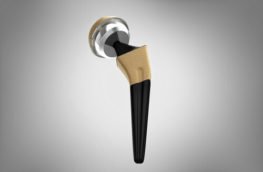Metal-on-Metal Hip Devices Lawyers

Warning: Metal-on-Metal Hip Replacement Devices Can Cause Serious Complications
Each year, approximately 270,000 people in the U.S. undergo hip replacement surgery, with more than 20% of them performed using what is known as “metal-on-metal” hip implants. A metal-on-metal hip implant is a device that contains a metal ball and socket which are typically made of chromium or cobalt. For many years before the use of metal-on-metal implants, earlier devices were made from other materials such as polyethylene (plastic) or ceramic. However, over last ten years, many orthopedic surgeons have favored implants made with metal stems and sockets, as they appeared to be more resistant to dislocation and material wear and tear.
However, since the FDA’s approval of metal-on-metal hip replacement devices, these products have unfortunately received quite a bit of public scrutiny, due to serious complications associated with their use, such as:
- Chronic hip, groin or back pain
- Painful walking or moving
- Swelling in the hip/groin area
- Dislocation or loosening of the implant device
- A clicking or crunching noise originating from the implant device
- Decreased physical ability
- Metal poisoning
- Subsequent hip implant revision surgeries
- Cancer from toxic metal exposure
FDA Warnings about Metal-on-Metal Hip Replacement Devices
According to a Bloomberg article published in July 2012, the FDA reported a total of approximately 16,800 complications, such as those listed above, related to the usage of metal-on-metal hip implants in the United States between 2000 and 2011. In addition, the FDA issued a statement entitled “Concerns about Metal-on-Metal Hip Implant Systems”, indicating that there may be a risk of metal poisoning associated with having a metal-on-metal implant devices. Recently, the Food and Drug Administration met with orthopedic specialists due to the growing body of evidence across the globe establishing that metal-on-metal hip implant devices have a higher failure rate than those made of other materials, such as plastic or ceramic. The FDA indicated that it will release its recommendations shortly.
Metal-on-Metal Hip Replacement Implant Devices Have Been Shown to be Dangerous
Pursuant to a study published in The Lancet, researchers examined over 400,000 hip replacement patients who underwent device implantation surgeries between 2003 and 2011. Out of the 400,000, over 30,000 received metal-on-metal implants, which consist of ball and cup made of materials such as chromium and cobalt. When compared with those that received hip implants made of other materials, such as ceramic or plastic, the metal-on-metal devices evinced a much higher failure rate. Specifically, over six percent of these devices failed, where a much small percentage failed for non-metal-on-metal devices. Additionally, another recent study published in the British Medical Journal indicates that implant manufacturers are aware of the evidence linking metal-on-metal hip devices to serious adverse side effects. The report also provided that several thousands of people across the globe who received metal-on-metal hip replacement implants and other similar devices may have been exposed to dangerous amounts of toxic metals, due to wear and tear of these products.
Metal-on-Metal Hip Replacement Devices in the News
Metal-on-metal hip replacement devices have been the subject of numerous lawsuits filed in state and federal courts across the country. Specifically, due to the number of lawsuits brought against metal-on-metal hip replacement device manufacturers, many of these cases have been consolidated into MDLs, or multidistrict litigation suits. An MDL is a type of legal proceeding that helps federal courts effectively manage the high volume of cases brought against product manufacturers, such as those that produce metal-on-metal implant devices. To date, metal-on-metal hip replacement device manufacturers have already paid billions of dollars to resolve these suits and individuals ones brought in state court.
Lawyers Are Ready Now to Help You
It is crucial to speak with an attorney who is qualified to handle the various complexities and nuances associated with suing device manufacturers. Only skilled product liability lawyers can help victims of metal-on-metal hip replacement implants recover monetary damages for costs due to medical treatment, pain and suffering, as well as lost wages. You certainly need an attorney on your side who has the experience necessary to help you get the compensation that you deserve.
Metal-on-Metal Hip Replacement Case Evaluations
Give us a call today to see if you or a loved one may be entitled to recover monetary damages from complications caused by metal-on-metal hip replacement implant manufacturers. Call attorney Ken Stern at 1-844-808-7529, or complete an online contact form for assistance.













